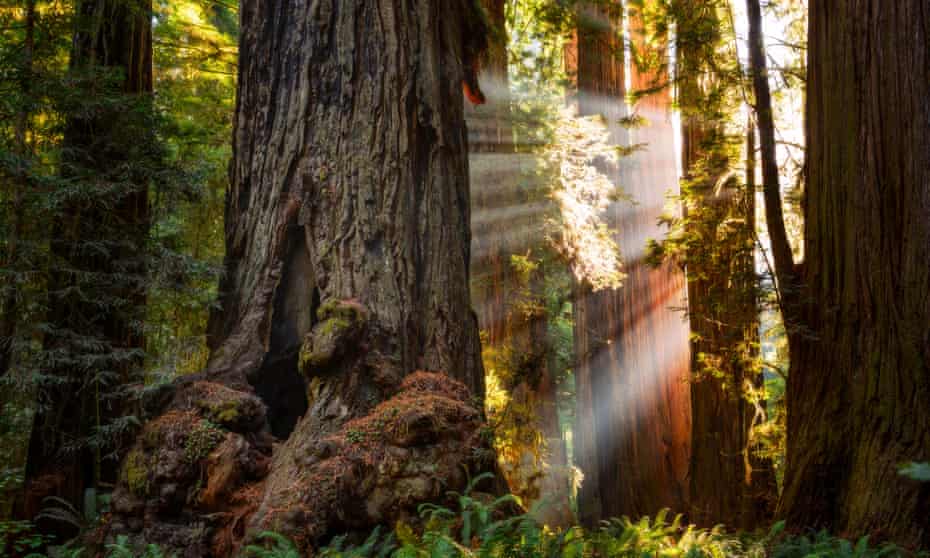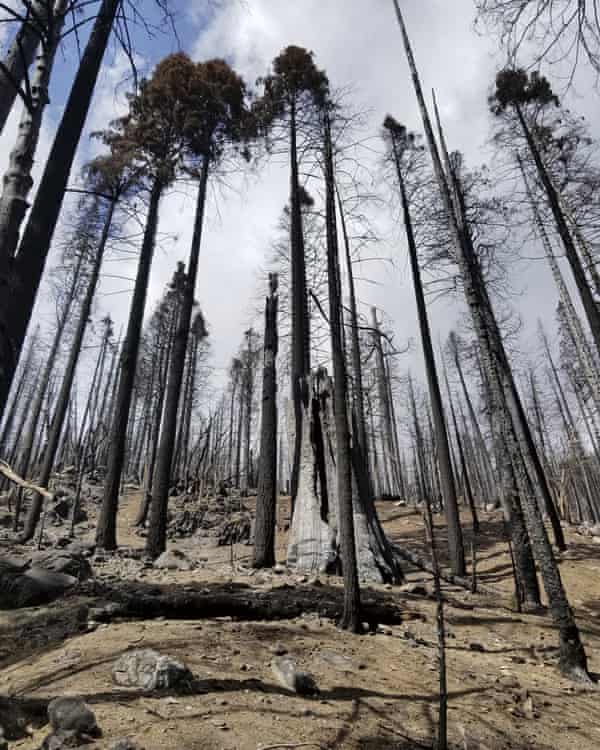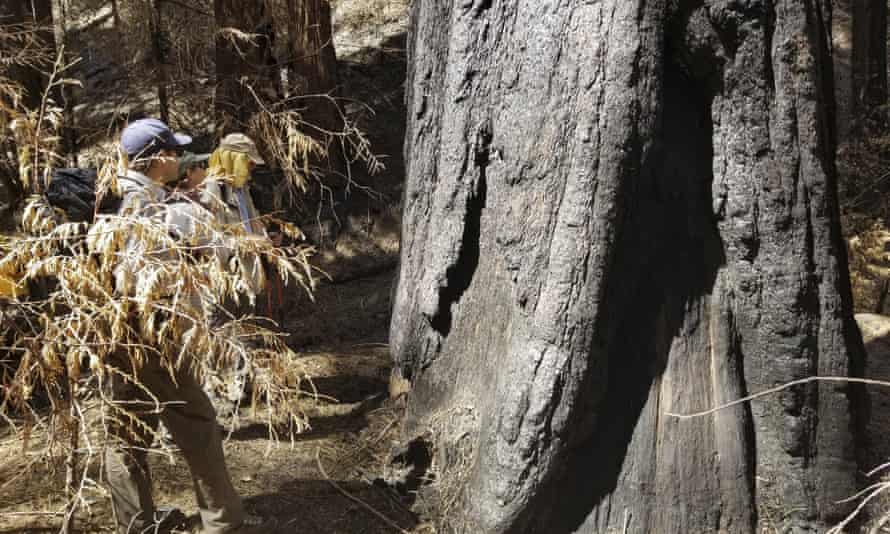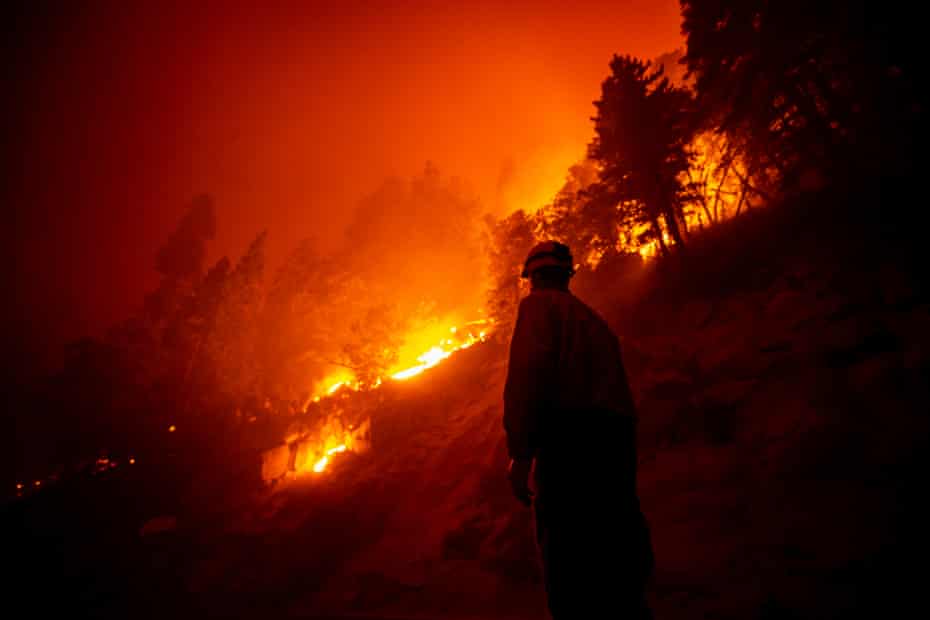Dear Diary. The main purpose of this ongoing blog will be to track global extreme or record temperatures related to climate change. Any reports I see of ETs will be listed below the main topic of the day. I’ll refer to extreme or record temperatures as ETs (not extraterrestrials)😉
Main Topic: ‘Mind-blowing’: Tenth Of World’s Giant Sequoias May Have Been Destroyed By A Single Fire
Dear Diary. Going down the climate and weather food chain, climate change has consequences, influencing weather, which in turn disturbs and changes both flora and fauna. One of the big cases in point that we can see in our one lifetime is the destruction of the majestic giant sequoias in California that have stood in portions of the California’s Sierra for millennia. Apparently a full tenth of these were destroyed in just one of the huge fires that have occurred in California due to the climate becoming Warner and drier there recently. Yes, the climate crisis has tangible consequences that we can now see as of the 2020s.
For more details on thus unfortunate event here is an article by the Guardian:
https://www.theguardian.com/us-news/2021/jun/02/sequoias-destroyed-california-castle-fire
‘Mind-blowing’: tenth of world’s giant sequoias may have been destroyed by a single fire

A giant Sequoia and redwood trees. Photograph: Scott Sady/Alamy
Draft report by National Park Service scientists finds 2020 Castle fire decimated California’s population of ancient trees Jack Herrera in San Francisco Thu 3 Jun 2021 01.00 EDT
A huge fire in California last year may have destroyed up to a tenth of the world’s mature giant sequoia population, according to a draft report produced by scientists working for the National Park Service.
From August to December 2020, the Castle fire tore through Sequoia national park, burning through thousands of the ancient redwoods, the world’s largest tree. By the time the blaze was contained, it had consumed 175,000 acres of parkland. NPS scientists now estimate that between 7,500 and 10,000 mature giant sequoias went up in flames.

“I cannot overemphasize how mind-blowing this is for all of us. These trees have lived for thousands of years. They’ve survived dozens of wildfires already,” said Christy Brigham, the chief of resources management and science at Sequoia and Kings Canyon national parks.
Giant sequoias only grow in the peaks and valleys of a small central range of California’s Sierra Nevada. Because of the trees’ concentrated range, last year’s fire managed to literally decimate part of the world’s remaining population of the unique flora.
In recent months, researchers with the NPS have traversed the charred forests to survey the damage. In early May, some of these researchers discovered a trunk of one sequoia still burning, months after the rest of the fire was contained, and after an entire winter of rain and snow.
At that time, researchers did not yet know the extent of the fire’s damage. Now, a draft report shared with the Visalia Times-Delta newspaper, which first reported the news on Wednesday, reveals just how catastrophic the burn was.
Brigham, the study’s lead author, cautioned that the numbers are preliminary and the research paper has yet to be peer-reviewed. Beginning next week, teams of scientists will hike to the groves that experienced the most fire damage for the first time since the ashes settled.
“I have a vain hope that once we get out on the ground the situation won’t be as bad, but that’s hope, that’s not science,” she said.

Fire scientists examine a giant sequoia tree following the 2020 Castle fire. Photograph: Tony Caprio/AP
In Sequoia national park, most of the older sequoias have survived fires across millennia. The giant trees are not only fire-adapted – they’re also fire-dependent. Sequoias depend on low-intensity fires to help them release their seeds from waxy pine cones. However, in recent years, the climate crisis and a buildup of fuels have led to high-intensity, out-of-control burns that threaten the survival of the groves.
“One hundred years of fire suppression, combined with climate change-driven hotter droughts, have changed how fires burn in the southern Sierra and that change has been very bad for sequoia,” Brigham said.
For generations, Native people in California lit controlled burns as a part of land husbandry. However, in the first half the 20th century, the state and federal government worked to prevent fires in protected land like Sequoia. This led to a massive buildup in fuel – dry and fallen timber and leaves.

The Castle fire burns along a highway in the Sequoia national forest in September 2020. Photograph: Étienne Laurent/EPA
As wildfires began to burn with an unnatural intensity, researchers in Sequoia and Kings Canyon began conducting controlled burns in the 1960s. These low-intensity fires clear out tinder on the forest floor and help the sequoias germinate. However, Brigham says that the current rate of intentional burns have not been enough. In the last few decades, officials have burned about 1,000 acres in controlled fires per year. Brigham estimates that it would take 30 times that number to return the forests to a healthy state.
The consequences of losing thousands of giant sequoias will reverberate across California – and the world – for decades. The ancient groves are habitat for native wildlife, and their root systems help protect the watershed that farmers in the state’s San Joaquin Valley depend on. Because redwoods remove and store carbon from the atmosphere at a nearly unrivaled rate, losing sequoia could intensify the climate crisis.
And the danger for the sequoias is far from over. With most of California in severe drought, the dryness of vegetation across the state has shocked officials who worry that this year’s fire season might prove historically devastating. 2020 saw five of the six largest wildfires in California history burn through the state, destroying millions of acres and blanketing much of California in noxious smoke.
The Associated Press contributed reporting
As dry and hot as the West is this year giant sequoias are threatened more than ever. Should massive fires break out and threaten them this year I will let you know on this blog.
Related:
Here are some “ET’s” reported this Friday:
Here is more May 2021 climatology:
Here is more climate and weather news from Friday:
(As usual, this will be a fluid post in which more information gets added during the day as it crosses my radar, crediting all who have put it on-line. Items will be archived on this site for posterity. In most instances click on the pictures of each tweet to see each article. The most noteworthy items will be listed first.)
Now here are some of today’s articles and notes on the horrid COVID-19 pandemic:
(If you like these posts and my work please contribute via the PayPal widget, which has recently been added to this site. Thanks in advance for any support.)
Guy Walton “The Climate Guy”